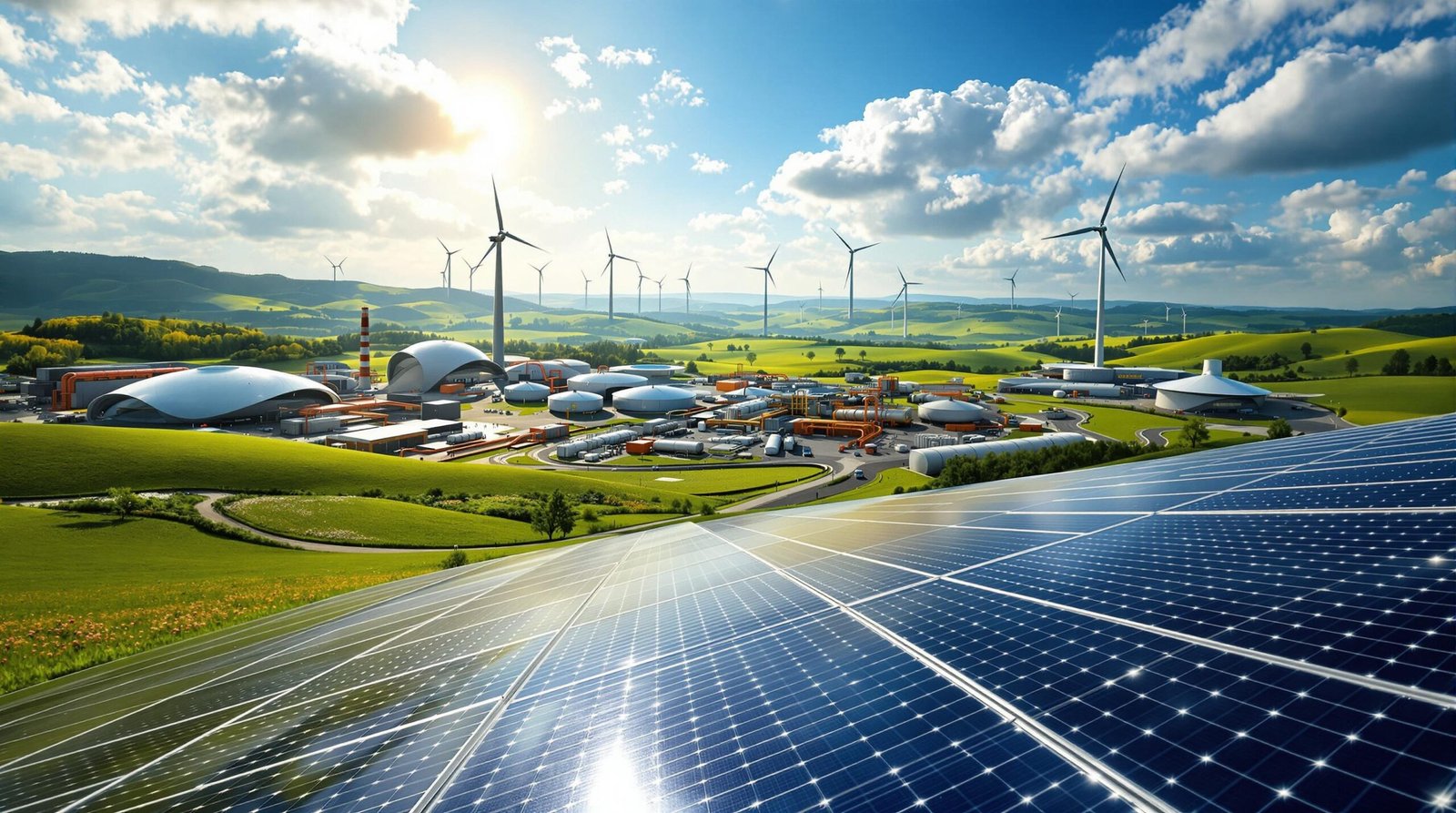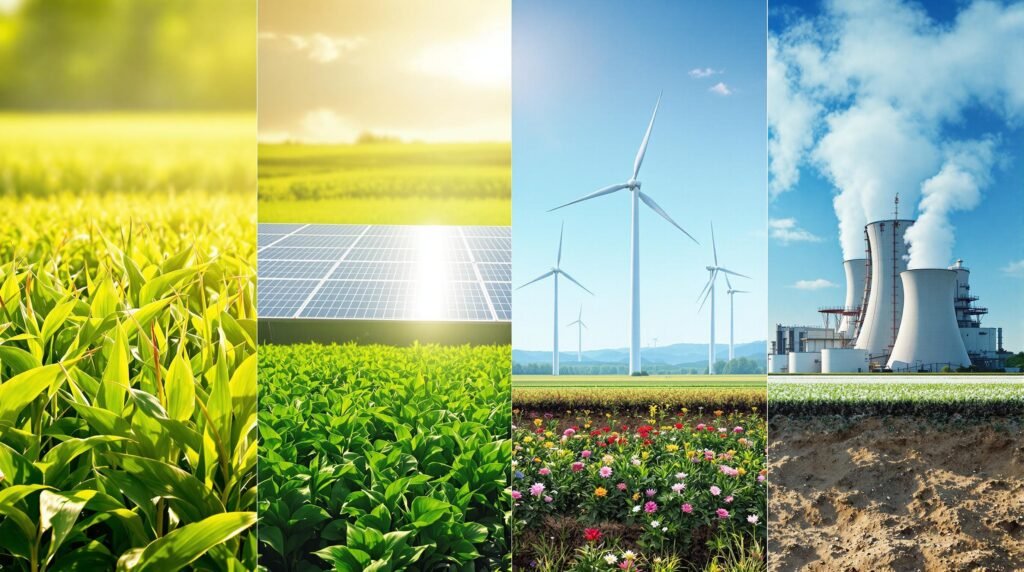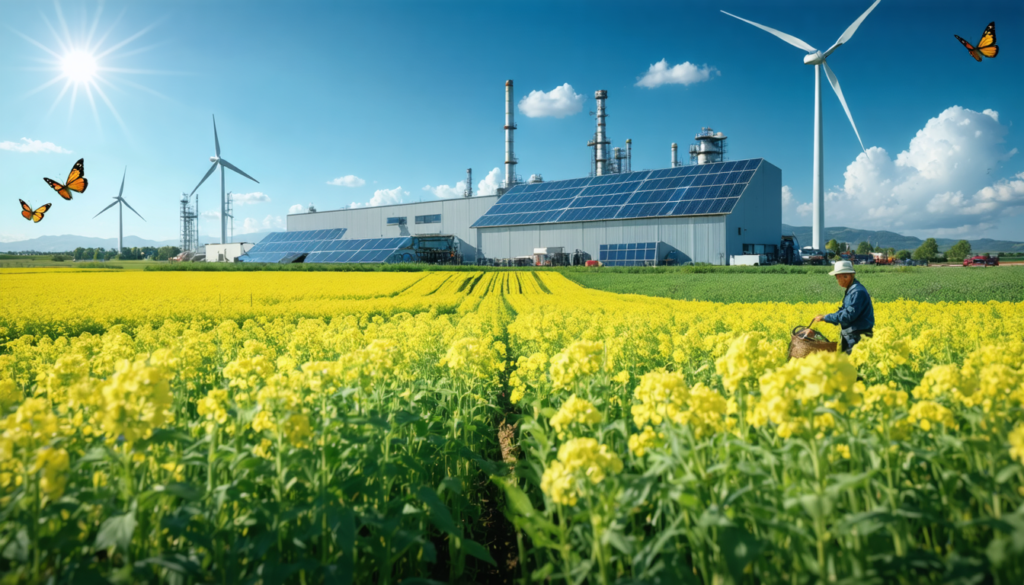As the urgency for sustainable energy solutions grows, people face significant challenges in choosing the most effective, environmentally friendly energy sources. This decision is crucial as our planet grapples with climate change, depleting fossil fuels, and the need for energy security. The rising demand for cleaner energy solutions can lead to confusion regarding the best approach to meet energy needs. Every option, from biofuels to solar and wind energy, offers distinct benefits and challenges that must be understood to make informed decisions for a sustainable future.
Failing to grasp these differences can result in poor energy choices that exacerbate environmental issues or miss vital opportunities for energy efficiency. To navigate this complex landscape, there is a clear pathway: an in-depth exploration of biofuels, solar, wind, and geothermal energy will unveil how each can contribute to a sustainable future.
Identifying the unique attributes, advantages, and challenges of these energy sources paves the way for a balanced approach to our energy dilemma. A comprehensive evaluation can emphasize their roles in enhancing energy security while minimizing environmental impact.
Understanding Renewable Energy Sources
Renewable energy is derived from natural processes that are replenished constantly, offering a sustainable solution to meet our energy demands. Unlike fossil fuels, which are finite and contribute to greenhouse gas emissions, renewable sources provide a cleaner alternative that helps combat climate change. The primary renewable energy sources include solar, wind, hydro, biomass, and geothermal systems, each playing a unique role in shaping our energy future.
What is Biofuel?
Biofuels are derived from organic materials, such as plants, agricultural waste, or animal manure. This energy source can be utilized for transportation, heating, or electricity generation. They come in various forms, including biodiesel, made from vegetable oils or animal fats, and bioethanol, produced through fermentation of sugars from crops like corn and sugarcane.
The Role of Solar Energy
Solar energy harnesses the sun’s rays through photovoltaic solar panels or solar thermal systems to generate electricity. This energy source is abundant and accessible worldwide, making it a popular choice for residential, commercial, and industrial applications.
Exploring Wind Energy
Wind energy captures the kinetic energy from wind currents through turbines, converting it into electricity. Wind farms, both onshore and offshore, leverage consistent wind patterns to provide significant power output. The decreasing costs associated with wind turbine installation and maintenance make this energy source increasingly viable.
An Overview of Geothermal Energy
Geothermal energy utilizes heat from the Earth’s core to generate electricity or heat buildings. It is a stable energy source available in specific geographic regions, making it a reliable option for baseload power generation.
Comparing the Advantages of Biofuels, Solar, Wind, and Geothermal Energy
Analyzing the benefits of each of these energy sources reveals their unique contributions to a sustainable energy future. What follows is a detailed look at how biofuels compare to solar, wind, and geothermal energy.
Advantages of Biofuels
- Waste Utilization: Biofuels can be generated from waste materials, reducing landfill use and transforming trash into energy.
- Carbon Neutrality: When produced sustainably, biofuels can be nearly carbon neutral, since the carbon dioxide emitted during combustion is roughly equal to the amount absorbed by the plants during growth.
- Diverse Applications: Biofuels can be used in existing internal combustion engines, offering an immediate solution for reducing dependence on fossil fuels.
Advantages of Solar Power
- Abundance: Solar energy is virtually limitless, as sunlight is available in most geographical locations worldwide.
- Low Operating Costs: After installation, solar systems generally require minimal maintenance, leading to low ongoing costs.
- Decentralization: Solar systems can be deployed on rooftops or remote locations, providing energy access in underdeveloped areas.
Benefits of Wind Energy
- High Efficiency: Wind turbines convert a significant proportion of wind energy into electricity, making it one of the most efficient renewable sources available.
- Economic Growth: The wind energy sector has created numerous jobs in manufacturing, installation, and maintenance.
- Large-Scale Production: Wind farms can generate substantial quantities of power, contributing to energy grids and supporting entire communities.
Geothermal Energy Advantages
- Reliability: Unlike solar and wind, geothermal energy can provide a stable and consistent power supply, independent of weather conditions.
- Low Emissions: Geothermal power generation produces very few greenhouse gas emissions compared to traditional fossil fuels.
- Small Land Footprint: Geothermal plants require less land compared to solar and wind installations, minimizing environmental disruption.
| Energy Source | Advantages |
|---|---|
| Biofuels | Waste utilization, carbon neutrality, diverse applications |
| Solar Power | Abundance, low operating costs, decentralization |
| Wind Energy | High efficiency, economic growth, large-scale production |
| Geothermal Energy | Reliability, low emissions, small land footprint |
Examining the Challenges of Each Energy Source
While biofuels, solar, wind, and geothermal energy each offer vital advantages, they are not without challenges. Understanding these limitations is essential for making informed decisions regarding energy consumption and sustainability.
Challenges Facing Biofuels
Despite their benefits, biofuels face several challenges that must be addressed. One of the most significant concerns is the competition for agricultural resources. As agricultural land is used to grow energy crops, food production may suffer, leading to higher food prices and potential food insecurity. Additionally, the process of converting biomass into usable energy can be less efficient than other renewable sources, requiring large quantities of feedstock to produce meaningful power outputs.
Challenges of Solar Power
Solar energy, while abundant and increasingly cost-effective, also presents challenges. One of the most significant limitations is the dependency on sunlight. Solar energy generation varies based on weather conditions and time of day, which necessitates the need for energy storage systems or backup power sources. Additionally, large solar farms can require significant land space, which may be limited in densely populated areas. Initial installation costs, although decreasing, can still be considerable, limiting accessibility for some consumers.
Wind Energy Challenges
Wind energy’s effectiveness relies heavily on geographical factors. Areas with consistent and strong wind patterns are ideal for wind farms, which means many regions may not be suitable for wind power generation. Environmental impact is also a concern, as wind turbines can pose risks to local wildlife, particularly birds and bats. Lastly, public perception of wind farms can vary, with some communities opposing installations due to aesthetic or noise concerns.
Geothermal Energy Limitations
Geothermal energy, although reliable, has its own set of challenges. The feasibility of geothermal energy production is often limited to regions with suitable geological characteristics, restricting broader application. Additionally, the initial costs associated with drilling and plant construction can be high, which may deter investment. The potential for induced seismicity or land subsidence also raises concerns for communities surrounding geothermal facilities.
Comparative Analysis: Biofuels, Solar, Wind, and Geothermal Energy
To better understand how biofuels stack up against solar, wind, and geothermal energy, a comparative analysis across crucial criteria provides a clear perspective. Below is a summary table that highlights the differences.
| Criteria | Biofuels | Solar Power | Wind Energy | Geothermal Energy |
|---|---|---|---|---|
| Efficiency | Moderate efficiency; requires substantial feedstock | High efficiency if sunlight is abundant | Very high in optimal conditions | Stable and high efficiency in suitable regions |
| Environmental Impact | May compete with food production; land use concerns | Low environmental impact during operation | Impact on wildlife; visual disruption | Possible land subsidence and induced seismicity |
| Cost | Varies based on feedstock price; moderate initial investment | Decreasing costs; significant initial costs | Initial investment decreasing; operational costs low | High upfront costs; low operational costs |
| Regional Suitability | Utilized wherever biomass is available | Suitable in most regions with sufficient sunlight | Best in locations with consistent wind | Optimal in areas with geothermal activity |
The Future of Renewable Energy and Sustainable Solutions
The pursuit of a sustainable energy future involves harnessing the strengths of various energy sources while mitigating their limitations. As a society, recognizing the unique advantages of biofuels, solar, wind, and geothermal energy allows us to create an energy system that utilizes these resources in an integrated manner. This could take the form of hybrid energy systems that use biofuels in conjunction with solar or wind technology, or the combination of geothermal heating with biofuel electrical generation.
Investing in a Sustainable Future
Investment in research and development of emerging technologies can enhance the efficiency and effectiveness of all renewable energy sources, leading to more sustainable solutions. Initiatives that promote sound agricultural practices and responsible land use can help balance food production with biofuel development, paving the way for more efficient practices.
Advococating Technological Advancements
Sharing information and innovations between sectors can enable the development of breakthrough technologies, making renewable energy more accessible and affordable. Engaging communities in conversations about energy solutions and the importance of sustainability fosters a participatory approach that empowers individuals and businesses to advocate for cleaner energy options.
Collaboration for Change
Collaboration between governments, industries, and the scientific community can further unite renewable energy objectives, creating policies that incentivize the transition to sustainable sources. This unified effort may include tax incentives for solar and wind energy installations or subsidies aimed at promoting biofuel production.
Visual Representation of Renewable Energy Sources

Sourcing Information and Innovations
To delve deeper into the nuances of renewable energy, many resources provide insights into the advancements and challenges faced in the sector. Engaging with publications, research articles, and community projects can broaden understanding and stimulate dialogue on energy transformation.




